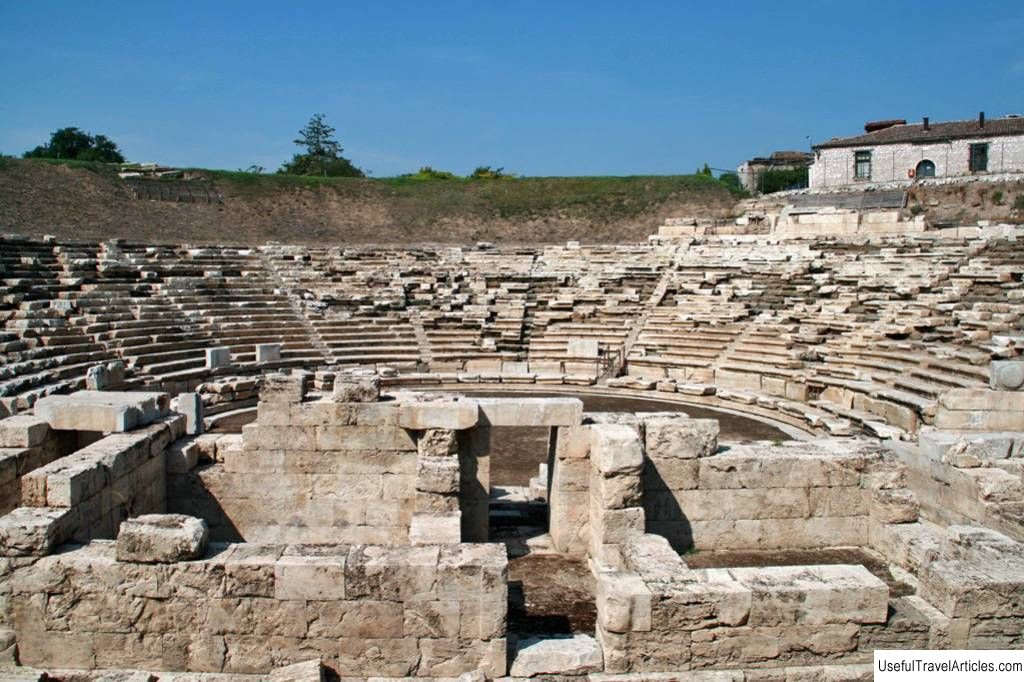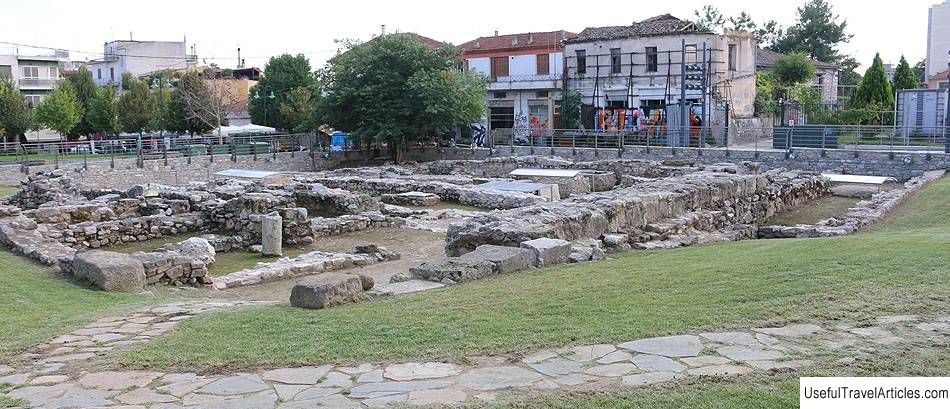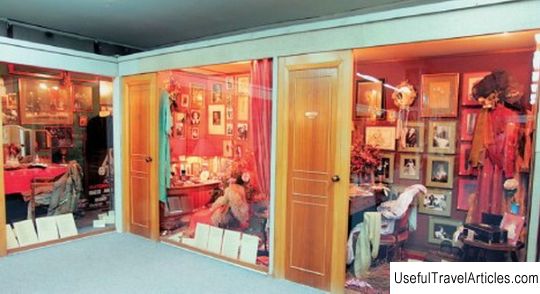Ancient theater description and photos - Greece: Larissa
Rating: 8,5/10 (709 votes) 
Ancient theater description and photos - Greece: Larissa. Detailed information about the attraction. Description, photographs and a map showing the nearest significant objects. The name in English is Ancient theater. Photo and descriptionThe ancient theater in Larissa was one of the largest theaters in Ancient Greece and the largest in Thessaly. Its capacity was 10,000 people. The ancient theater was located on the southern slope of the Frurio hill, on which the ancient Acropolis of Larissa was located. Today, the ruins of the ancient theater are located in the center of the modern city. The Bolshoi Antique Theater (or the First Ancient Theater) was built outside the fortified ancient city during the reign of King Philip V of Macedonia at the end of the third century BC. and was actively used for about six centuries. Initially, the theater served not only as a place for staging theatrical performances and other cultural events, but also as a city agora, where meetings of the people's assembly (the supreme body of Thessaly) were held. The theater was most likely a place of worship for the god Dionysus. Such assumptions were made after the altar of Dionysus was discovered near the theater. The structure had the typical structure of a Hellenistic theater. At the end of the 1st century A.D. the theater was converted into a Roman arena and was thus used until the end of the 3rd century AD, while theatrical performances during this period were held in the so-called Maly Theater, which was located nearby. Many centuries have passed and once a majestic ancient building was buried underground. Although the upper part of the theater was visible even before the middle of the 19th century, after the earthquake in 1868 it completely disappeared under the rubble of destroyed buildings. Later, new houses were built on this site. In 1910, the first studies were carried out and part of the scene was excavated. In 1990, a large-scale program began to restore the ancient theater. Part of the city's buildings were demolished specifically for this purpose. Today, this ancient structure is considered the hallmark of the city, an important historical monument and a popular tourist attraction.      We also recommend reading Church of the Resurrection of the Word on Uspensky Vrazhka description and photos - Russia - Moscow: Moscow Topic: Ancient theater description and photos - Greece: Larissa. |




